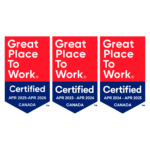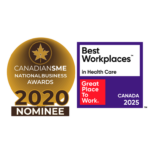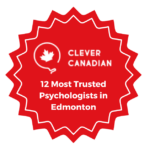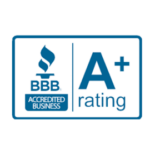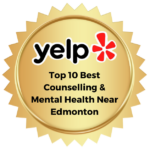
Not Just One or the Other: Workplace Mental Health and Performance = Effective, well-rounded solutions and support for all three key determinants – the organization, the leaders, and the individual employees.
Our Service Priorities
Insight Corporate’s solutions are designed to address 3 core priorities:
- Help organizations assess and address organizational risks that affect employee mental health and performance;
- Provide more advanced and specialized support to:
- Employees with more complex and/or severe mental health difficulties, more specialized needs (e.g. employees going through gender transition, employees with cognitive disabilities needing special assessments or support, employees needing intervention for substance use disorder, etc.)
- Employees in high consequence and/or high-risk professions
- Organizational leaders
- Equip leaders with assistance and support to navigate difficult workplace mental health issues, deal with mental health cases, mitigate risks as well as strengthen their own wellness and resilience.
Healthy and effective employees and leaders operating in a healthy and effective organizational system contribute directly to the organization’s ability to stay productive, innovative, and successful.
Employee mental (and physical) wellness, work performance, and personal effectiveness are impacted by various personal and environmental factors, with their organization’s culture, systems, and practices being among the most impactful environmental factors.
While initiatives such as EFAP or other wellness programs such as health screening, gym membership, fitness sessions, nutrition planning, mental health training may be helpful, their focus is mainly on solutions for the individual. The onus is on each individual employee to personally access the programs and use them to help resolve their personal difficulties and keep themselves well. What such programs do not do, however, is address the organizational factors that may directly cause or contribute to the employees’ difficulties. Such could include work over or under load, inadequate work control or clarity, inadequate support, low physical or psychological safety, lack of recognition and rewards, poor growth and development opportunities, and more.
If organizations want to yield good, sustainable outcomes in employee wellness, performance, and personal effectiveness, they must go beyond providing employees with individual-based solutions. They must also look honestly into the organization’s work culture, systems, and practices to see if there are wellness-impacting risks and hazards that need to be addressed. If such concerns are present and left unaddressed, employees will continually be exposed to workplace hazards that erode their mental/physical health, sense of safety, performance, and personal effectiveness. Aside from addressing risks and hazards, organization need to go a step further by building a work culture and environment that authentically and actively promotes wellness, diversity, psychological safety, injury prevention, healthy work-life boundaries, and early intervention at the earliest signs of concern.
A 2022 global study by The Workforce Institute involving 3400 respondents found that 69% of respondents say that their manager has a significant impact on their mental health, akin to that of their partner (69%), and more than the impact from their doctors or therapists!
With mental health finally in the forefront of priorities for organizations, leaders are now expected to have not only strong general leadership skills but also specific competency in monitoring and navigating workplace mental health issues, destigmatizing and participating in conversations around employees’ and their own mental health, championing mental wellness programs, creating a wellness-fostering work culture, and also serving as mental health first aiders. Unfortunately, there are some clear barriers that make this a difficult feat for leaders.
A 2022 Deloitte study involving 2100 respondents across Canada, USA, UK, and Australia found that 68% of executive leaders aren’t taking enough action around employee health because: they are overwhelmed and don’t know where to start (20%), they don’t feel qualified to take ownership of these areas (18%), and/or don’t have enough funding (17%) or support from other executives (16%).
Most organizational leaders do not have previous training around mental health and may not be adequately equipped to:
- understand how mental health problems may affect employees’ cognitive, emotional, and physical functioning, and how these in turn may affect their performance, relationships, and personal effectiveness;
- recognize or facilitate behaviour changes;
- audit, recognize, and address organizational risk and hazards that may affect employees’ mental wellness, sense of safety, performance, and personal effectiveness;
- tackle deep rooted stigma and discrimination associated with mental health issues and the compounded factors of ethnicity and culture, gender, age, socioeconomic status, and others on the employees’ experience and care for mental health issues;
- recognize how their own self-awareness, leadership styles and approaches, relationship management abilities, and state of mental wellness can affect the employees’ mental wellness, performance, and personal effectiveness.
Furthermore, a high percentage of organizational leaders (60%, according to DDI Global Leadership Survey of 15,000 leaders from 1740 organizations), especially senior leaders (82%, according to Deloitte Canada survey of 1100 senior leaders) are experiencing exhaustion and burnout. Having to carry multiple high-consequence responsibilities at work at any given time and having to also deal with stressors from one’s personal live have put tremendous psychological burden and strain on the leader. When leaders are tired, burnt out, and have many competing priorities, they will likely not have the mental, emotional, and/or physical capacity to continually exert the significant efforts needed to properly monitor and address workplace mental health issues, fully support employees, actively ensure the delivery of wellness-fostering values and practices at every level of the organization as well as deal with their own stress or other mental health challenges.
With much at stake for the employees, whose wellness, sense of safety, and performance are impacted by their leaders; the organization, which relies on its leaders to secure its future; and for the leaders themselves, who must keep well to lead well; ensuring that effective ongoing supports are in place to build the leaders’ wellness, skills, and capacity should be a priority for every organization.
Click HERE for information on our suite of leader support programs, which includes individual wellness maintenance and fractional mental health teams to support leaders’ efforts in managing workplace mental health issues and risks.
When it comes to mental health support, a single program, be that an EFAP or another, may not be adequate to ensure the personalization of care for each employee in need since each program will have certain limitations. For example:
- Employees with more complex and/or severe mental health difficulties or more specialized needs may seek more advanced or specialized assessments, therapies, and treatments that are not available through their standard EFAP.
- Employees in high consequence and high-risk professions (e.g. uniformed personnel, first responders, healthcare professionals, inner-city client support workers, teachers, etc.) may seek more tailored and specialized support from clinicians with either personal experience in these professions and/or distinct professional knowledge and experience working with members in high consequence and high risk professions/jobs.
- Employees in high-impact roles like organizational leaders may seek support from programs that help them tackle their organizational stressors as well as their personal stressors.
- Some employees may conclude that naturopathic care works best for them while other employees may seek a specialized program that helps them quit smoking, resolve their sleep problem, or address their concern with obesity – all of which are issues that can have noticeable effects on their mental health.
- When employees go through transitions or major events in their life (e.g. starting a family, menopause, health crisis, death of a spouse, etc.), their needs often change, and so too would the types of care and support they may seek.
If employees are not getting what they need, they are not motivated to use the program, and this is one of the commonly cited reasons for EFAP’s low utilization of between 5% to 10% and low satisfaction (according to Benefits Canada, less than 40% of employees are satisfied with their EFAP).
It may not be feasible for organizations to offer too many different wellness programs, so if mental health is the priority, organizations should first dedicate energy and resources to ensuring that the core mental health services provided (counselling/therapy, clinical assessments, and related treatments) are flexible, adequately diverse, and effective in meeting employees’ personal needs. Such efforts and resources may include supplementing the organization’s standard EFAP with an advance and specialized mental health care program for employees with complex/severe mental health issues and high consequence jobs, adding or redirecting some resources to the employees’ formal Health Spending or Flexible Wellness Account to accommodate more flexible care options, or establishing a Mental Health Spending Account that offers employees flexibility on the types, levels, and providers of mental health care they can access.
When choosing mental health programs, it is also important to avoid being distracted by nice-to-have add-on services or resources that may come with a program. All of these would be immaterial if the core mental health services offered are hard to access, not well used, and/or not deemed by employees to be effective or satisfactory in helping them deal with their mental health difficulties.
Click HERE for information on our Specialized Care Program and our Flexible Mental Wellness Accounts
In Canada, there are several key provincial and federal legislations that regulate aspects of work and workplaces that affect employees’ mental and physical health. These include:
- Employment standards legislation that regulates aspects such as work hours, rest periods, overtime, leave, and others that have a bearing on an employee’s work demands and stress.
- Occupational health and safety legislation that guide aspects such as hazard management, protection against harassment and violence, case investigation, and others that have a bearing on an employee’s psychological safety.
- Human rights legislation that protects employees from discrimination in employment on various protected grounds such as race, sexual orientation, gender, age, disabilities, and more.
- Workers’ compensation legislation that protects and provides for employees who have suffered work-related psychological injuries. Protection and provisions include timely reporting of injury, return-to-work arrangements, and appropriate accommodations.
Employers are expected to be aware of their obligations under the above legislations and ensure that they are in compliance of those legislation.
Employee mental (and physical) wellness, work performance, and personal effectiveness are impacted by various personal and environmental factors, with their organization’s culture, systems, and practices being among the most impactful environmental factors.
While initiatives such as EFAP or other wellness programs such as health screening, gym membership, fitness sessions, nutrition planning, mental health training may be helpful, their focus is mainly on solutions for the individual. The onus is on each individual employee to personally access the programs and use them to help resolve their personal difficulties and keep themselves well. What such programs do not do, however, is address the organizational factors that may directly cause or contribute to the employees’ difficulties. Such could include work over or under load, inadequate work control or clarity, inadequate support, low physical or psychological safety, lack of recognition and rewards, poor growth and development opportunities, and more.
If organizations want to yield good, sustainable outcomes in employee wellness, performance, and personal effectiveness, they must go beyond providing employees with individual-based solutions. They must also look honestly into the organization’s work culture, systems, and practices to see if there are wellness-impacting risks and hazards that need to be addressed. If such concerns are present and left unaddressed, employees will continually be exposed to workplace hazards that erode their mental/physical health, sense of safety, performance, and personal effectiveness. Aside from addressing risks and hazards, organization need to go a step further by building a work culture and environment that authentically and actively promotes wellness, diversity, psychological safety, injury prevention, healthy work-life boundaries, and early intervention at the earliest signs of concern.
A 2022 global study by The Workforce Institute involving 3400 respondents found that 69% of respondents say that their manager has a significant impact on their mental health, akin to that of their partner (69%), and more than the impact from their doctors or therapists!
With mental health finally in the forefront of priorities for organizations, leaders are now expected to have not only strong general leadership skills but also specific competency in monitoring and navigating workplace mental health issues, destigmatizing and participating in conversations around employees’ and their own mental health, championing mental wellness programs, creating a wellness-fostering work culture, and also serving as mental health first aiders. Unfortunately, there are some clear barriers that make this a difficult feat for leaders.
A 2022 Deloitte study involving 2100 respondents across Canada, USA, UK, and Australia found that 68% of executive leaders aren’t taking enough action around employee health because: they are overwhelmed and don’t know where to start (20%), they don’t feel qualified to take ownership of these areas (18%), and/or don’t have enough funding (17%) or support from other executives (16%).
Most organizational leaders do not have previous training around mental health and may not be adequately equipped to:
- understand how mental health problems may affect employees’ cognitive, emotional, and physical functioning, and how these in turn may affect their performance, relationships, and personal effectiveness;
- recognize or facilitate behaviour changes;
- audit, recognize, and address organizational risk and hazards that may affect employees’ mental wellness, sense of safety, performance, and personal effectiveness;
- tackle deep rooted stigma and discrimination associated with mental health issues and the compounded factors of ethnicity and culture, gender, age, socioeconomic status, and others on the employees’ experience and care for mental health issues;
- recognize how their own self-awareness, leadership styles and approaches, relationship management abilities, and state of mental wellness can affect the employees’ mental wellness, performance, and personal effectiveness.
Furthermore, a high percentage of organizational leaders (60%, according to DDI Global Leadership Survey of 15,000 leaders from 1740 organizations), especially senior leaders (82%, according to Deloitte Canada survey of 1100 senior leaders) are experiencing exhaustion and burnout. Having to carry multiple high-consequence responsibilities at work at any given time and having to also deal with stressors from one’s personal live have put tremendous psychological burden and strain on the leader. When leaders are tired, burnt out, and have many competing priorities, they will likely not have the mental, emotional, and/or physical capacity to continually exert the significant efforts needed to properly monitor and address workplace mental health issues, fully support employees, actively ensure the delivery of wellness-fostering values and practices at every level of the organization as well as deal with their own stress or other mental health challenges.
With much at stake for the employees, whose wellness, sense of safety, and performance are impacted by their leaders; the organization, which relies on its leaders to secure its future; and for the leaders themselves, who must keep well to lead well; ensuring that effective ongoing supports are in place to build the leaders’ wellness, skills, and capacity should be a priority for every organization.
Click HERE for information on our suite of leader support programs, which includes individual wellness maintenance and fractional mental health teams to support leaders’ efforts in managing workplace mental health issues and risks.
When it comes to mental health support, a single program, be that an EFAP or another, may not be adequate to ensure the personalization of care for each employee in need since each program will have certain limitations. For example:
- Employees with more complex and/or severe mental health difficulties or more specialized needs may seek more advanced or specialized assessments, therapies, and treatments that are not available through their standard EFAP.
- Employees in high consequence and high-risk professions (e.g. uniformed personnel, first responders, healthcare professionals, inner-city client support workers, teachers, etc.) may seek more tailored and specialized support from clinicians with either personal experience in these professions and/or distinct professional knowledge and experience working with members in high consequence and high risk professions/jobs.
- Employees in high-impact roles like organizational leaders may seek support from programs that help them tackle their organizational stressors as well as their personal stressors.
- Some employees may conclude that naturopathic care works best for them while other employees may seek a specialized program that helps them quit smoking, resolve their sleep problem, or address their concern with obesity – all of which are issues that can have noticeable effects on their mental health.
- When employees go through transitions or major events in their life (e.g. starting a family, menopause, health crisis, death of a spouse, etc.), their needs often change, and so too would the types of care and support they may seek.
If employees are not getting what they need, they are not motivated to use the program, and this is one of the commonly cited reasons for EFAP’s low utilization of between 5% to 10% and low satisfaction (according to Benefits Canada, less than 40% of employees are satisfied with their EFAP).
It may not be feasible for organizations to offer too many different wellness programs, so if mental health is the priority, organizations should first dedicate energy and resources to ensuring that the core mental health services provided (counselling/therapy, clinical assessments, and related treatments) are flexible, adequately diverse, and effective in meeting employees’ personal needs. Such efforts and resources may include supplementing the organization’s standard EFAP with an advance and specialized mental health care program for employees with complex/severe mental health issues and high consequence jobs, adding or redirecting some resources to the employees’ formal Health Spending or Flexible Wellness Account to accommodate more flexible care options, or establishing a Mental Health Spending Account that offers employees flexibility on the types, levels, and providers of mental health care they can access.
When choosing mental health programs, it is also important to avoid being distracted by nice-to-have add-on services or resources that may come with a program. All of these would be immaterial if the core mental health services offered are hard to access, not well used, and/or not deemed by employees to be effective or satisfactory in helping them deal with their mental health difficulties.
Click HERE for information on our Specialized Care Program and our Flexible Mental Wellness Accounts
In Canada, there are several key provincial and federal legislations that regulate aspects of work and workplaces that affect employees’ mental and physical health. These include:
- Employment standards legislation that regulates aspects such as work hours, rest periods, overtime, leave, and others that have a bearing on an employee’s work demands and stress.
- Occupational health and safety legislation that guide aspects such as hazard management, protection against harassment and violence, case investigation, and others that have a bearing on an employee’s psychological safety.
- Human rights legislation that protects employees from discrimination in employment on various protected grounds such as race, sexual orientation, gender, age, disabilities, and more.
- Workers’ compensation legislation that protects and provides for employees who have suffered work-related psychological injuries. Protection and provisions include timely reporting of injury, return-to-work arrangements, and appropriate accommodations.
Employers are expected to be aware of their obligations under the above legislations and ensure that they are in compliance of those legislation.

